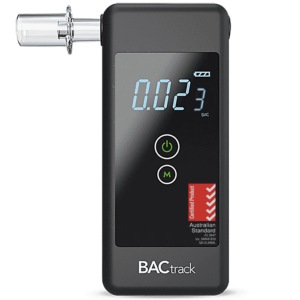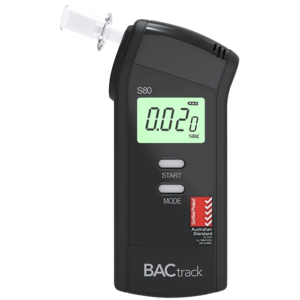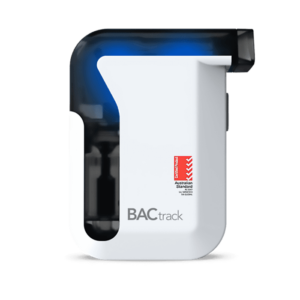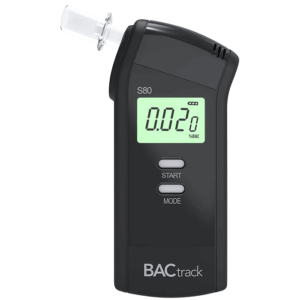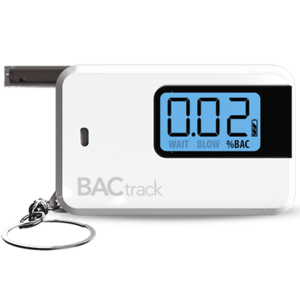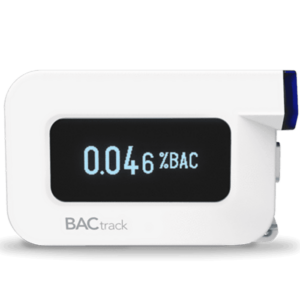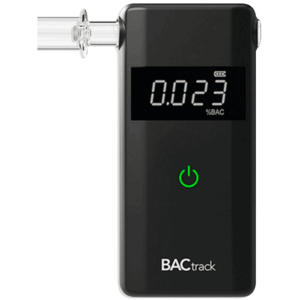What is a Drug and Alcohol Test?
15 December, 2022
Safety, security, and well-being are among the most important aspects of any workplace or organisation. However, many employers face untoward drug or substance use incidents every year. Substance impairment is a common issue affecting many workplaces in New Zealand. Therefore, employers practice safety and preventive procedures to keep the work environment free of health and safety hazards that can endanger anyone. A standard practice that employers observe is to implement drug and alcohol tests for employees. This article will discuss everything you need to know about drug and alcohol testing in the workplace.
Workplace testing aims to detect the presence of alcohol, illicit drugs, or misuse of prescription drugs. It is a program to prevent unhealthy behaviour or practices. Likewise, drug and alcohol tests are essential in high-risk industries to minimise the negative impacts of substance use. It involves obtaining biological specimens to examine for impairing substances. Companies may employ several procedures, including the use of workplace breathalysers. Modern devices from Breathalysers New Zealand are valuable in keeping the work environment safe and alcohol-free.
Impacts of Drugs and Alcohol
Illicit drugs refer to highly addictive and illegal substances that significantly harm one’s health. Under New Zealand’s Misuse of Drugs Act 1975, using or possessing illegal drugs is an offence. The penalties include imprisonment and hefty fines. On the other hand, alcohol consumption is a regular part of most social gatherings or festivities. Many people find alcohol pleasing in moderate amounts. However, higher doses lead to severe impairment. Similarly, intoxication is one of the contributing factors in road and workplace accidents. Therefore, businesses and high-risk industries include drug and alcohol tests in their safety programs. Additionally, drug and alcohol use have the following impacts:
- Affect the brain and perception, including reduced vision and hearing
- Inability to make sound judgments and decisions and poor concentration
- Impaired motor functions such as eye-hand coordination
- Increased tardiness and absenteeism
- Strain relationships with family, friends, and colleagues

Why Workplaces Should Invest in Drug and Alcohol Tests
The prevalence of drug and alcohol use has profound consequences in the workplace. Impaired workers put themselves and others at serious safety risks resulting in accidents and injuries. According to NZ’s Health and Safety at Work Act (HSW Act), employers must protect workers’ health and well-being by exercising all reasonable means to manage occupational risks. This may include submitting employees to drug and alcohol tests through a workplace policy. Additionally, investing in testing programs can serve the following benefits:
- Mitigate safety hazards – testing workers for substance use helps identify and manage safety risks early on. Through early detection, the workplace can intervene and prevent potential accidents.
- Improve productivity – impaired employees have reduced mental and physical abilities. Therefore, it directly affects their work performance. Thus, keeping the workplace drug and alcohol-free reduces work disruptions and boosts the workers’ efficiency.
- Cultivate a safety culture – workplaces with safety programs promote healthy practices and behaviour. In addition, employees perform better in a safe and healthy environment.
- Manage costs – companies incur high expenses due to substance-related incidents. Drug and alcohol tests help prevent accidents and reduce hospitalisation and insurance claims.
- Reduce company liabilities – workplaces can identify and manage issues before they become serious problems. Workplace programs help protect businesses by exercising all practical measures to keep the environment safe and proving they are not negligent of untoward incidents.
The Importance of Workplace Policies
It is a vital role of businesses to ensure the health and safety of their workers. Similarly, employees are also responsible for keeping the working environment secure by following safety policies or procedures. Employees must abide by the rules to maintain safety. A breach of the policy should have appropriate disciplinary actions. Thus, a comprehensive program enables employers to implement drug and alcohol tests as a practical means to manage workplace hazards. Additionally, the workplace policy covers all the procedures, employee rights, information on prohibited substances, drug and alcohol test guidelines, and provisions for positive test results. Moreover, the policy must be clear and amenable to all.
In establishing a workplace program, it is critical that employers communicate the policies to all employees. Additionally, it should be fair and objective to all concerned. Therefore, businesses should seriously consider employees’ rights. This is because many people deem a drug and alcohol test at work invasive of one’s privacy. However, workplace testing is essential to protect the company’s interests and employees’ welfare. Furthermore, employers must introduce safety programs with care. For example, companies can include drug and alcohol testing as part of the conditions in a job offer or employment agreement. Lastly, employers must obtain a formal agreement through a written employee consent form to facilitate drug and alcohol tests.

When to Conduct Workplace Testing
Once a company establishes a comprehensive policy, it may now administer a drug and alcohol test in the workplace. A workplace may facilitate these tests according to their need and in adherence to State or Federal laws. The common reasons for conducting a workplace test are:
- Pre-employment requirement. It is common for employers to include drug and alcohol tests in hiring employees in safety-critical roles. A pre-employment test can help determine if a job applicant abuses illicit substances or alcohol that may negatively impact workplace safety.
- Random testing. These are unannounced tests, with each employee having an equal chance of being selected. The conduct of administering and selecting employees should be known through the policy. Additionally, random tests are designed to identify workers hiding their impairment.
- Post-incident testing. Workplaces conduct drug and alcohol tests after an accident to determine the cause. Moreover, the test should be done within a period. Post-incident tests help employers prove that they are not negligent of the accident or near-miss.
- For-cause testing. This test occurs when a supervisor or manager has reasonable suspicion that a worker is under the influence of drugs or alcohol. An employee may display signs of intoxication through behaviour and appearance. For example, the employee has bloodshot eyes, alcohol odour, and poor coordination. Moreover, the company must follow strict guidelines to administer the test to avoid legal problems.

Standard Drug and Alcohol Test at Work
Drug and alcohol abuse has detrimental impacts on society. Substance impairment increases health risks and causes accidents on the road or in other public places. Additionally, many people who consume alcohol or drugs work in various sectors. Therefore, the workplace is one of the critical settings for managing substance use. An employer can monitor impairment through several procedures. The standard procedures for workplace drug and alcohol tests are urine drug testing and alcohol breath testing. These methods include the following process:
- Urine drug test – detect illicit substances or misused prescription drugs through a urine sample. The standard urine test can trace illegal drugs for up to 12 hours from last use. For chronic users, urine can trace substances for up to one week. However, advanced tests like Gas Chromatography-Mass Spectrometry (GC-MS) can detect longer periods.
- Breath alcohol test – the standard procedure for alcohol screening is a breath test through a breathalyser. Workplace breathalysers from Breathalysers New Zealand can determine the per cent of alcohol in the system through the breath. Moreover, breathalysers can detect alcohol for up to 24 hours, depending on the consumed amount.
Drug and Alcohol Tests: Other Testing Methods?
The urine and breath tests are standard procedures for identifying employees with current impairment. It is because they are cost-efficient in detecting substance use. Moreover, compared to other methods, urine and breathalyser tests are non-invasive. However, other testing methods are used in some instances, such as in a laboratory. The other methods for conducting a drug and alcohol test are:
- Oral fluid – saliva is an alternative to a urine drug test when the latter is unavailable. A certified collector obtains a sample by swabbing the insides of the mouth. A mouth swab test can also detect drug use within 5 to 48 hours only. Therefore, it can only trace recent consumption.
- Blood – a blood sample test is considered the most accurate type of test by experts. It analyses the drug compounds directly in the blood. However, it is also the most invasive procedure. It involves inserting a needle into the veins to draw a blood sample. Therefore, they are suitable as confirmatory tests for initial positive screening results.
- Hair – drugs or drug metabolites can enter the hair follicles and stay there for a definite period. Hair follicle tests can detect drugs or alcohol for up to 90 days. Thus, their longer detection period efficiently determines a person’s history or past usage.

Facilitating Workplace Drug and Alcohol Tests
Workplaces can carry out drug and alcohol tests in-house through self-testing kits. Businesses may use test kits for drugs, such as a urine strip test or a mouth swab test. A urine strip test has a dipstick with chemicals covered in the strip. It changes colours when certain substances are present or have reached a certain level. Similarly, a saliva test includes a collection stick to obtain an oral fluid sample. These procedures can be conducted within a few minutes and give rapid results. When the results are positive, the sample can be sent to a detection agency for confirmation. They are efficient for on-site testing as employees do not need to leave work for a long time. For example, employees can give specimen samples in a secured or private location. Moreover, they are low-cost and do not need a prescription when purchasing.
On the other hand, alcohol screening is quick and easy through a workplace breathalyser like BACtrack. The BACtrack breathalysers can process the breath sample in 10 to 15 seconds. Therefore, you will know if a person is intoxicated immediately. Workplaces use a pro-grade breathalyser to estimate the alcohol content accurately. Additionally, an on-hand breathalyser enables the employer to facilitate alcohol screening at any time. Unlike other test methods, anyone can get and operate a breathalyser without needing a licensed professional. Therefore, it helps monitor alcohol impairment efficiently. Furthermore, workplace breathalysers or testing kits help companies cut alcohol and drug test costs.

Positive Alcohol and Drug Test Results: What’s Next?
It is essential that a company must have clear procedures when an employee returns with a positive drug and alcohol test result. A workplace policy outlines not only the safety and test procedures but also the consequences for a breach of policy. Moreover, a workplace program should focus on prevention and assistance rather than punishment. If the tests return positive, the employer and employee have several options. The affected employee may request a secondary test to confirm preliminary screening results. A blood sample or other advanced tests validated by a Medical Review Officer (MRO) can finalise the test result.
If the final drug and alcohol test results are positive, the employee may face the consequences depending on the policy. For example, some workplaces implement suspension for a specific period. In extreme cases, the employee may face dismissal following due process. However, employers can offer rehabilitation to affected workers through the Employee Assistance Program. This program provides treatment for employees with substance abuse problems. The employee may be able to go back to work once they have completed the program. Breathalysers from Breathalysers New Zealand can help individuals with alcohol use disorders monitor their BAC levels.
Alcohol Tests with Breathalysers
Companies can facilitate drug and alcohol tests using drug-testing kits and breathalyser devices. A breathalyser is a portable hand-held device that measures a person’s Blood Alcohol Content (BAC). The BAC is a person’s alcohol level or the per cent alcohol in the bloodstream. It is calculated in grams per 100ml of blood or 210 litres of breath. Thus, the breathalyser measures the BAC using the breath alcohol to blood alcohol ratio of 2,100:1. Additionally, it directly indicates the degree of intoxication. Hence, the higher the BAC, the greater the impairment. Furthermore, breathalysers utilise sensor technologies to analyse alcohol in the breath sample. Breathalysers have two kinds of sensors:
- Semiconductor sensor – a semiconductor sensor uses a tin-oxide substance to measure the BAC. The sensors produce a redox reaction when it contacts with alcohol. It creates an output voltage with the change of sensor resistance relative to the present alcohol amount. Thus, the measured current indicates the BAC.
- Fuel cell sensor – breathalysers with platinum fuel cell sensors undergo an electrochemical process to oxidise alcohol in the breath. The oxidisation produces an electrical current corresponding to the volume of present alcohol. As a result, the number of currents is converted into BAC values.

The Reliability of Fuel Cell Breathalysers
Workplaces can maintain a safe and healthy environment through reliable drug and alcohol test methods and devices. Workplaces, hospitals, and clinics use breathalysers with fuel cell sensors to accurately estimate the BAC. Fuel cell sensors are considered the industry’s standard in alcohol breath tests. This is because fuel cell breathalysers give consistent and precise BAC results. Particularly, fuel cell sensors are ethanol-specific. It does not react with other substances such as alcohol found in mouthwash or breath sprays. Likewise, it will not interfere with the results of people with diabetes or low-calorie diet who have high levels of acetone. Therefore, fuel cell breathalysers are less likely to produce false positives.
Fuel cell breathalysers maintain their performance longer than standard semiconductor breathalysers. It means that you will get consistent BAC readings despite back-to-back tests. In addition, they need a longer period before requiring recalibration. Therefore, workplaces can get the most out of drug and alcohol tests using reliable devices like fuel cell breathalysers. In line with this, most alcohol testers at Breathalysers NZ utilise fuel cell sensors for high-precision alcohol tests. Breathalysers NZ has a wide range of BACtrack devices for personal or professional use. Moreover, the BACtrack breathalysers are trusted by experts, authorities, and individuals to deliver accurate BAC results. In particular, Breathalysers NZ has the most robust fuel cell breathalysers meeting the high testing demands of many workplaces.
Workplace Breathalysers at Breathalysers New Zealand
A company may independently facilitate drug and alcohol tests without a test agency’s services. Breathalysers New Zealand provides efficient and reliable alcohol testing devices through workplace breathalysers. The professional line of Breathalysers NZ utilises enlarged fuel cell sensors to trace alcohol over a complete BAC range. The workplace breathalysers available at Breathalysers NZ are:
- BACtrack S80 Pro Gen2 – the breathalyser features the industrial-grade Xtend Electrochemical fuel cell sensor with enhanced linear accuracy. It is specially designed for commercial environments requiring precise and efficient breath tests.
- BACtrack Mobile Gen2 – the smartphone breathalyser is modified to fit the needs for remote alcohol monitoring. The device connects to a smartphone through Bluetooth and can deliver the BAC results to an app. It is an efficient compliance tool for employees working off-site.
- Alcovisor Mercury – the breath testing device offers breath screening and testing modes. It can give an instantaneous reading by detecting alcohol in the screening mode or accurate BAC reading in the testing mode. Furthermore, it has an optimal touchscreen design for efficient operation.
- Alcovisor Alcotorch – an alcohol detector designed to track alcohol through passive screening. It is suitable for entering premises like airports, military bases, and concert venues.

Remote Alcohol Monitoring with BACtrack Breathalysers
Employers offer assistance programs to help affected employees dealing with substance use disorders. Employees with positive drug and alcohol test results may enter the program to treat their disorders. Many companies monitor their employees through the healthcare professionals assigned to them. Alternatively, they can directly monitor the treatment progress through smartphone breathalysers like the BACtrack Mobile Pro. Breathalysers NZ offers remote alcohol monitoring through the BACtrack View with the Mobile Pro breathalyser. The BACtrack View is an app-based program that can monitor recovery by viewing regular BAC reports. Under the program, the employee can arrange alcohol breath tests on a random or timed schedule. Each breath test is recorded with a camera to verify the right person is performing the test.
The BACtrack View is valuable for companies and employees to reestablish accountability. The app sends the BAC results to the Monitor for immediate viewing. The Monitor can be a family member, a healthcare professional, or an employer. Moreover, the app can set a timely reminder when a breath test is due. It enables the affected worker to undergo recovery in the comfort of home. In addition, using a reliable fuel cell breathalyser like the BACtrack Mobile Pro gives accurate results. Therefore, it makes remote drug and alcohol test monitoring easy and convenient.

Factors Affecting the Blood Alcohol Content
Drugs and alcohol are psychoactive substances that affect a person’s normal mental and physical functions. These substances can adversely affect health and safety, no matter the amount. Therefore, a drug and alcohol test can help companies minimise hazards. Even though alcohol is a legal substance, its use is highly regulated. In moderate amounts, alcohol creates pleasant or euphoric effects. It also alters the mood and lowers inhibitions. However, excessive amount leads to severe impairment of perception and motor functions. It can lead to reduced vision and hearing, memory loss, and poor balance and coordination. Therefore, these reduced capabilities pose safety risks, especially in driving or operating machinery. Moreover, knowing the different aspects that affect the BAC can help moderate alcohol intake. Individual factors can influence the increase of the BAC, such as the following:
- Age
- Gender
- Weight
- Body type
- Body fat distribution
- Water and food intake
- Metabolism rate
- Medications
- Alcohol tolerance
Conclusion
Employees have a huge effect on how well an organisation performs. Ensuring the workplace is safe and healthy can greatly impact productivity and costs. Therefore, a drug and alcohol test is one of the cost-efficient measures to maintain workplace safety. Companies may effectively manage occupational hazards through consistent drug and alcohol screening. Additionally, a workplace can monitor alcohol impairment through professional breathalyser devices. The workplace breathalysers from Breathalysers New Zealand are efficient and dependable in delivering precise alcohol breath readings. Moreover, they are FDA-approved and DOT-compliant, meeting all the requirements of a breath screening device. Therefore, workplaces with a zero-alcohol tolerance policy can rely on BACtrack breathalysers. The police-grade fuel cell sensors help keep the working environment safe and alcohol-free. Undoubtedly, breathalysers are valuable investment devices to help ensure workplace or personal safety.


















